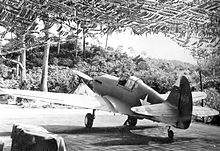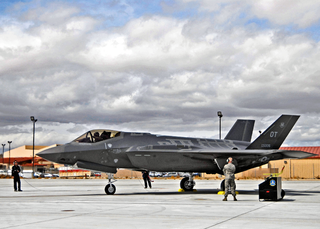
The 53rd Wing is a wing of the United States Air Force based at Eglin Air Force Base, Florida. The wing reports to the United States Air Force Warfare Center at Nellis Air Force Base, Nevada, which in turn reports to Headquarters Air Combat Command.

The 412th Test Wing is a wing of the United States Air Force, assigned to the Air Force Test Center at Edwards Air Force Base, California.

The 43rd Fighter Squadron is part of the 325th Fighter Wing at Tyndall Air Force Base, Florida. It conducts advanced fighter training for F-22 Raptor pilots.

The 53rd Fighter Squadron is an active unit of the United States Air Force, stationed at Joint Base Andrews, Maryland. Assigned to the 495th Fighter Group, the squadron was last activated on 10 December 2021, as an associate unit to the 113th Wing's 121st Fighter Squadron. It was previously assigned to the 52nd Operations Group and stationed at Spangdahlem Air Base, Germany, from where it operated the McDonnell Douglas F-15C/D Eagle until its inactivation on 31 March 1999.

The 60th Fighter Squadron is a United States Air Force unit that is part of the 33d Fighter Wing at Eglin Air Force Base, Florida; It is tasked with training pilots on the Lockheed Martin F-35A Lightning II.

The 78th Attack Squadron is an Air Force Reserve Command (AFRC) unit under the 926th Wing, Nellis Air Force Base, Nevada and Tenth Air Force at Naval Air Station Joint Reserve Base Fort Worth, Texas. The 78 ATKS conducts operations from Creech Air Force Base, Nevada in conjunction with their active-duty associates in the 432d Wing.

The 39th Flying Training Squadron is part of the 340th Flying Training Group and is the reserve associate to the 12th Flying Training Wing based at Randolph Air Force Base, Texas.
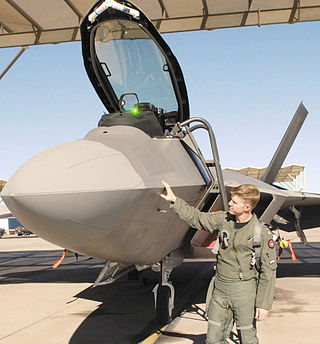
The 59th Test and Evaluation Squadron is a United States Air Force unit. It is assigned to the Air Combat Command 53d Wing, 53d Test Management Group at Nellis Air Force Base, Nevada.

The 15th Test and Evaluation Squadron is a United States Air Force unit, stationed at Eglin Air Force Base, Florida and assigned to the 753rd Test and Evaluation Group. It was first activated in the expansion of the United States military forces prior to World War II as the 15th Pursuit Squadron. It moved to Panama in 1942, where it participated in the defense of the Panama Canal. It returned to the United States, where it was a Replacement Training Unit for fighter pilots until 1944, when it was disbanded as the 15th Fighter Squadron in a reorganization of Army Air Forces training units in 1944

The 46th Fighter Training Squadron is an inactive United States Air Force unit. Its last assignment was with the 917th Operations Group at Barksdale Air Force Base, Louisiana. where it was inactivated on 1 October 1993.

The 445th Test Squadron is a United States Air Force squadron. It is assigned to the 412th Operations Group at Edwards Air Force Base, California. The 445th is part of the Air Force Test Center. Originally constituted in 1943 as the 445th Fighter Squadron, it was involved in the early testing of the first U.S. jets, the Bell P-59 Airacomet and later the Lockheed P-80 Shooting Star. The squadron would also be involved in flight-testing captured enemy aircraft, such as the Mitsubishi A6M Zero. During the Cold War, the unit served under the Air Defense Command as the 445th Fighter-Interceptor Squadron, flying various interceptor aircraft in defense of the Continental United States. De-activated in 1968 following a draw-down of active duty interceptor units, it was re-activated as the 6512th Test Squadron Squadron in 1969, beginning its official flight-testing mission. The unit was de-activated, re-activated, and re-designated multiple times over its life, being most recently re-activated with its current name in 2022.
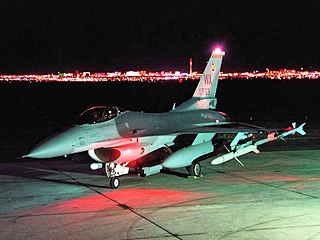
The 16th Weapons Squadron is a United States Air Force unit. It is assigned to the USAF Weapons School, based at Nellis Air Force Base, Nevada.

The XXVI Fighter Command was a formation of the United States Army Air Forces. It was assigned to Sixth Air Force throughout its existence. It was based at Albrook Field, Panama Canal Zone, where it was inactivated on 25 August 1946. It engaged in antisubmarine operations from the Canal Zone.

The 28th Test and Evaluation Squadron is an active United States Air Force unit. Its current assignment is with the 53d Wing, based at Eglin Air Force Base, Florida.

The 29th Training Systems Squadron is an active United States Air Force unit. It is assigned to the 753d Test and Evaluation Group, at Eglin Air Force Base, Florida.
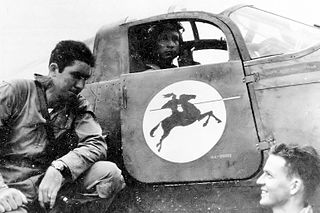
The 30th Fighter-Bomber Squadron is an inactive United States Air Force unit. Its last assignment was with the 37th Fighter-Bomber Wing, based at Clovis Army Airfield, New Mexico. It was inactivated on 25 June 1953.

The 74th Reconnaissance Squadron is an active United States Air Force unit, part of the 9th Reconnaissance Wing at Beale Air Force Base, California. The squadron was first active during World War II as the 74th Aero Squadron. In 1933 it was consolidated with the 74th Pursuit Squadron, which had been organized as a reserve training organization in 1927, activating in the Panama Canal Zone, where it served during World War II as the 74th Bombardment Squadron.

The 14th Fighter-Interceptor Squadron is an inactive United States Air Force unit. Its last assignment was with the 53d Fighter Group at Sioux City Municipal Airport, Iowa, where it was inactivated on 1 April 1960.

The 37th Operations Group is an inactive unit of the United States Air Force. It was last active at Tonopah Test Range Airport, Nevada, where it operated F-117 Nighthawk fighters. Its history and honors have been temporarily bestowed upon the 37th Training Wing.

The 32d Air Expeditionary Group is a provisional unit of the United States Air Force (USAF). It is assigned to United States Air Forces in Europe (USAFE) to activate or inactivate at any time. It was last active as the 32d Air And Space Operations Center in December 2006 at Ramstein Air Base, Germany.





